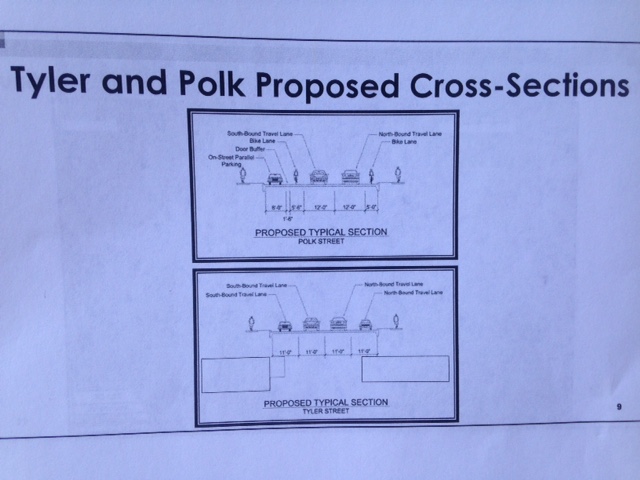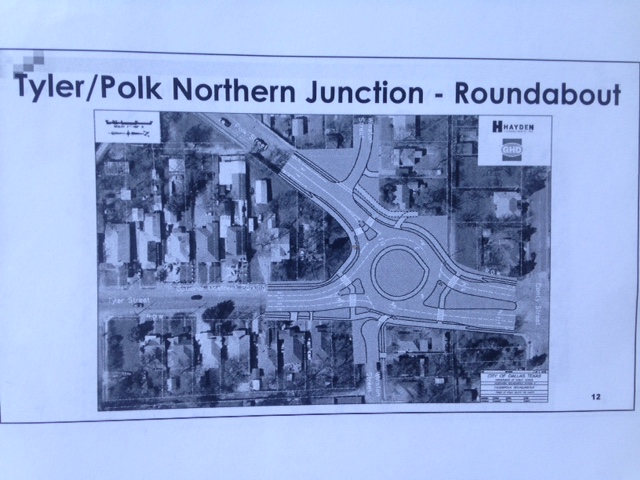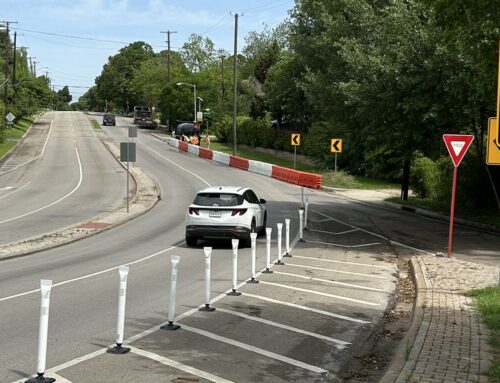City of Dallas staffers presented the plan to turn Tyler and Polk into two-way streets during a meeting with neighbors Thursday night.
The $3.1-million plan preserves all of the current on-street parking, City Councilman Scott Griggs said. The city also is working on agreements with Tyler Street United Methodist Church and others in an effort to use parking lots for employees of the Tyler Street district.
The area will continue to grow, Griggs says, and this is only the beginning. He says he intends to draw feedback from neighbors and then earmark proposed 2017 bond funds for streets, sidewalks and other needs.
Griggs and city staff say the plan will improve quality of life on Tyler by calming traffic and creating a more walkable neighborhood as well as improving access to neighborhood businesses.
Neighbors wary of the plan say it will increase traffic and cause access woes for residents who live on Tyler Street and the one-way Sunset Avenue.
The plan:
Polk is going on a “road diet,” with two only two lanes of auto traffic, one northbound and one southbound. It will also have 5-foot bike lanes on both sides of the street, an 8-foot parallel parking lane on one side and a 1.5-foot door buffer between the parking lane and the bike lane.
On Tyler, there are four lanes of traffic — two northbound and two southbound. An earlier proposal had called for no parking on Tyler during peak traffic times, but the new plan calls for allowing parking on Tyler all the time.
There will be a traffic roundabout where the two streets meet, between Winston and Canty. On the other end, near Page, will be a traffic signal.
The city’s traffic study found that with the two-way conversion, “traffic delays will increase but remain within acceptable level of service.”
The plan is expected to go before the City Plan Commission in May, and City Council could hear the proposal as soon as June 22. If approved, engineering design would begin in late summer.
Construction could start as soon as spring 2017 and would take about one year to complete.








